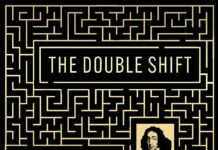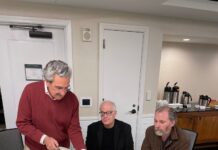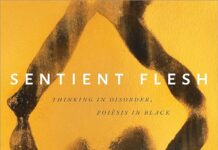by Molly Clark Hillard
This essay was peer-reviewed by the editorial board of b2o: an online journal.
In a recent New York Times article, Ishiguro said “as for Brontë, well, I owe my career, and a lot else besides, to Jane Eyre and Villette” (2015). Speaking at the Seattle Public Library on his 2015 novel, The Buried Giant, Ishiguro elaborated:
I have loved Jane Eyre and Villette…for some time, but…when I re-read them about three years ago, I suddenly realized how much I had ripped off from those two books…I read [them] with the usual pleasure and admiration, but also with some kind of private embarrassment…and in particular…those two books are absolutely fantastic for that…very coy way of the first person narrator…appearing to confide, very intimately, with the reader and then you suddenly find actually that there is some huge, hugely important, thing that the narrator has just held back…and I realized that that kind of thing had influenced me greatly in the way I write….Moments where you learn that Jane Eyre is crying, not because she the narrator says “I was crying”…but because the person she is talking to…says “what’s that in your eye, Jane…” and I thought “Whoops!” Exactly the same technique. (2015)
This quote illustrates more than simple literary influence; here Ishiguro avows his interest in the relationships and power dynamics between readers and authors, in both the effect and affect of reading. He is not just aware that Victorian novelists do this too; he indicates that his technique is more than merely analogous to Victorian novelists. He owes, he says, more than just his career to Brontë. Timothy Bewes has said that “Ishiguro offers no clues about how to read him” (2007: 205), but Ishiguro’s quote, it seems to me, suggests otherwise. I would at least like to ask whether what happens in certain 21st century novels is something other than, more than, postmodern pastiche. Perhaps another way to pose the problem is this: what if periodicity becomes unimportant or secondary next to our subjectivity, our constitution of selfhood within a literary history?
Since the 2005 publications of Ishiguro’s Never Let Me Go and Ian McEwan’s Saturday, we have been called to consider the network produced between 19th and 21st century novels. What do 19th-century novels do for 21st-century readers? What do they do for 21st-century novels? What, in turn, does juxtaposing 19th and 21st-century novels do for our understanding of literature itself? The V21 Collective exhorts us to just these questions; the work issuing from the group offers a collectivity of Victorian and 21st century thinking, as much as a human collective of scholars. In their manifesto and elsewhere, V21 asks whether Victorian literature still matters. If it does, if we have not “transcended” these plots, these characters, these ideologies and problems, then whither next? Even more fundamentally, V21 prompts us to consider whether reading itself is still a viable technology. The query is bound to related concerns about the future of the liberal arts university, which is based in great measure on the art and science of reading, and in corollary beliefs that reading is one thing (of many) that makes us human, and that the activity of reading bridges the division between the personal and the communal. In light of declining English majors nationwide, such questions are neither axiomatic nor sentimental.
So, what kinds of projects might the spirit of V21 make possible? We might, for instance, reflect on Victorian novels that offer scenes of reading and re-reading. Frankenstein, Jane Eyre, Wuthering Heights, Mill on the Floss, Daniel Deronda: these are all works in which acts of reading begin or escalate the action of the novel, in which books—history books, science books, devotional books—are central to the text’s aims. The novels feature characters whose acts of reading may make or mar them, but in one way or another seal their fates. These characters insert themselves into a literary history—not only resonating with it or speaking back to it, but also actually taking the book as literal or real. Frankenstein’s creature reads Paradise Lost as “a true history”(Shelley 2003: 132); Jane Eyre sees Gulliver’s Travels as “a narrative of facts” (C. Brontë 2003: 28); Maggie Tulliver and Mr. Lockwood are in thrall to found manuscripts with handwritten marginalia that directs or arrests their attention. I would argue that these characters are literary subjects; by calling attention to the books in their hands they remind us of the books in ours, and their fabrication, their materiality. Simultaneously, though, they suggest that all our lives are bound to, subject to, subjects of, the books we read.
If we were to turn, next, to Anna Kornbluh, for whom in comparative reading, “transtemporality or acontextuality is integral, a thought that gains gravity precisely by virtue of its repetition in history,” we might then look with fresh eyes at certain contemporary British novelists who make returns to Victorian literature, “going back and working on” Victorian plots, genres, and characters over the course of the narration (Ishiguro 2015: 115). Novels like Kazuo Ishiguro’s Never Let Me Go, Ian McEwan’s Saturday, and Zadie Smith’s White Teeth, each in their own way, announce that it is from Victorian literature that they have learned to read. Their authors present to us a set of palimpsested characters that demand, like their Victorian counterparts, to be read as literary subjects. We are used, perhaps, to define literary subjectivity as does Simon During: “a love of literature, more or less disjunct from explicit identification with political programmes,” the “disposition to engage intensely with [literature],” and the “production of fictions and simulacra and the provision of spaces and occasions for individuals to be communicated to” in a kind of “secular mimesis” (1996: 5). And in doing so, we generally associate it with an embarrassing lack of critical distance. But if we were to take literary subjectivity more literally, we might begin to see things differently. We might begin to see things like a character in a Victorian novel.
Transplanting, recycling, palimpsesting: these are activities to which I suggest we might append the common term “re-read.” Indeed, the Ishiguro quote that begins this piece highlights re-reading as integral to his writing. As a re-reader myself, I have begun to wonder exactly what re-reading does for us and to us. As a Victorianist, I wonder what it did for and to Victorian readerships. The epistemology of re-reading has gained critical attention in recent years in the fields of affect and empathy studies, educational history, book history, and reader response.[1] Yet no scholar has yet given re-reading quite the metaphoric register that I think it deserves. Re-reading is something that an individual does with a specific text, to be sure, and for many reasons: to memorize, to self-soothe, to amend misprision, to discern anew, to layer interpretations. The very term “re-read” originated in the nineteenth century, and I suspect that the word was coined because re-reading is implicitly connected with the development of the Victorian novel and techniques of reading it. For instance, free indirect discourse necessitates re-reading in order to conceive narrative double valence; and in an age of serial publication, completed novels were collected and bound, in part to be re-read. Bearing in mind Kornbluh’s call to construct “a grammar of resonance,” I’ve begun to wonder whether “re-reading” could also express the diachronic transference of literary bodies, one into the other, as intertexts.
One possible outcome of V21’s call for presentist, formalist, and comparative interpretation is for us to recognize in certain novels from Victorian and contemporary periods a community that exists across time as well as space, in the leaves of books as well as in a timestream. This literary community (network, as Latour would have it) is “sociable” in Rita Felski’s terms, but not homogeneous, not universal. Books do not always offer a “safe space” of warm assimilation. In recognizing the Victorian literary and cultural material that lives on within them, contemporary novel characters also must recognize their own unoriginality. They are, in some sense, copies. Paradoxically, though, a literary community is also vitally important to constituting their personhood, and to build any kind of human belonging that matters. These authors suggest, perversely, that we become human through the books we read and re-read, that we carry within. We are, to borrow loosely from Jane Bennett, part book in ways that are pleasurable as well as painful.
References
Ablow, Rachel. 2009. Oscar Wilde’s Fictions of Belief. NOVEL: A Forum on Fiction 42, no. 2: 175-182.
Bennett, Jane. 2010. Vibrant Matter. Durham, N.C.: Duke University Press.
Best, Stephen and Sharon Marcus. 2009. “Surface Reading: An Introduction.” Representations 108, no. 1: 1-21.
Bewes, Timothy. 2007. “Editorial Note.” In “Ishiguro’s Unknown Communities.” NOVEL: A Forum on Fiction 40, no. 3: 205-206.
Brontë, Charlotte. 2006. Jane Eyre. London: Penguin.
Brontë, Emily. 2003. Wuthering Heights. London: Penguin.
During, Simon. 1996. “Literary Subjectivity.” Journal of the Association for the Study of Australian Literature, NV. 1-12.
Eliot, George. 1995. Mill on the Floss. London: Penguin.
Felski, Rita. 2011. “Context Stinks!” New Literary History, 42. no. 4: 573-591.
Ishiguro, Kazuo. 2015. “Kazuo Ishiguro: By the Book,” New York Times Sunday Book Review, March 5.
—–. 2015. “Kazuo Ishiguro reads from his much anticipated new novel, ‘The Buried Giant’.”
Seattle Public Library, March 30. http://www.spl.org/library-collection/podcasts/2015-podcasts.
—–. 2005. Never Let Me Go. New York: Vintage.
Kornbluh, Anna and Benjamin Morgan, “Manifesto of the V21 Collective.” V21: Victorian
Studies for the 21st Century. Web. http://v21collective.org/manifesto-of-the-v21-collective-ten-theses/. Accessed 6/2/2016.
Latour, Bruno. 1993. We Have Never Been Modern. Harvard: Harvard University Press.
Moretti, Franco. 2013. Distant Reading. London: Verso.
O’Gorman, Francis. 2012. “Matthew Arnold and Re-Reading.” The Cambridge Quarterly 41, 2: 245-261.
Price, Leah. 2013. How to Do Things With Books in Victorian Britain. Princeton: Princeton University Press.
“reread, v.” Oxford English Dictionary Online. Oxford: Oxford University Press. Accessed 9/3/2016.
Shelley, Mary. 2003. Frankenstein. London: Penguin.
Notes
[1] Rachel Ablow has investigated how (for Oscar Wilde) re-reading fiction enables a kind of vicariousness through which one can “try on” the affective register of belief (2009: 179-180). Christopher Cannon considers the history of re-reading, tracing it from the Greeks to Locke in the sense of memorization or “knowing by heart” for the educational purposes of self-improvement or the medicinal properties of habit. Similarly focused on the historical mode, Rolf Engelsing describes a late eighteenth-century shift from the “intensive” re-reading of a few prized texts to the “extensive” consumption of many ephemeral ones while Leah Price counters that “some genres—particularly the novel—appear to have elicited a newly intensive reading at precisely the historical moment to which Engelsing traces its decline” (Price 2013: 318). Francis O’Gorman investigates what Matthew Arnold had to say about the effects of returning to a single poetic text over long spans of time; he notes that the poet was conflicted as to whether the purpose of re-reading was “to counter forgetfulness,” or to “investigate new perceptions” (2012: 250).
CONTRIBUTOR’S NOTE
Molly Clark Hillard is Associate Professor of English at Seattle University. She is the author of Spellbound: The Fairy Tale and the Victorians (Ohio State UP, 2014).




